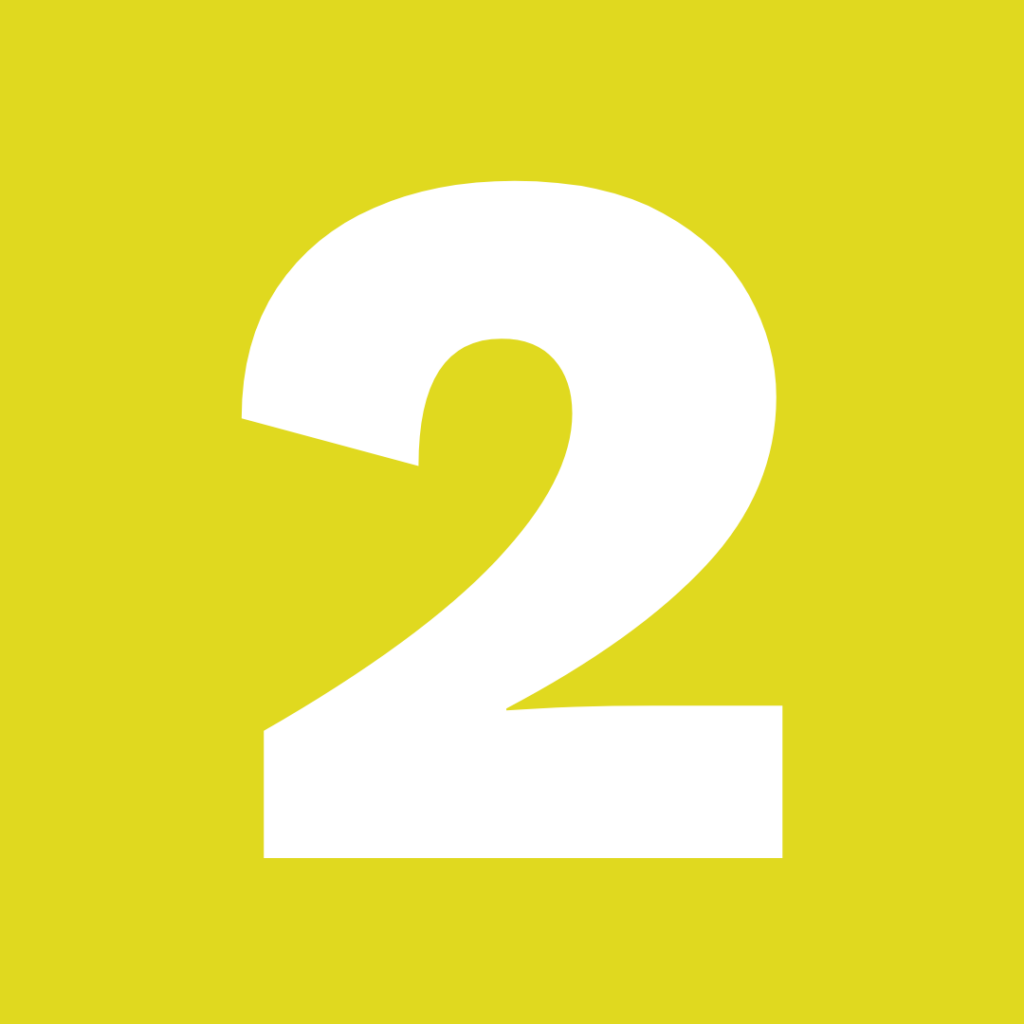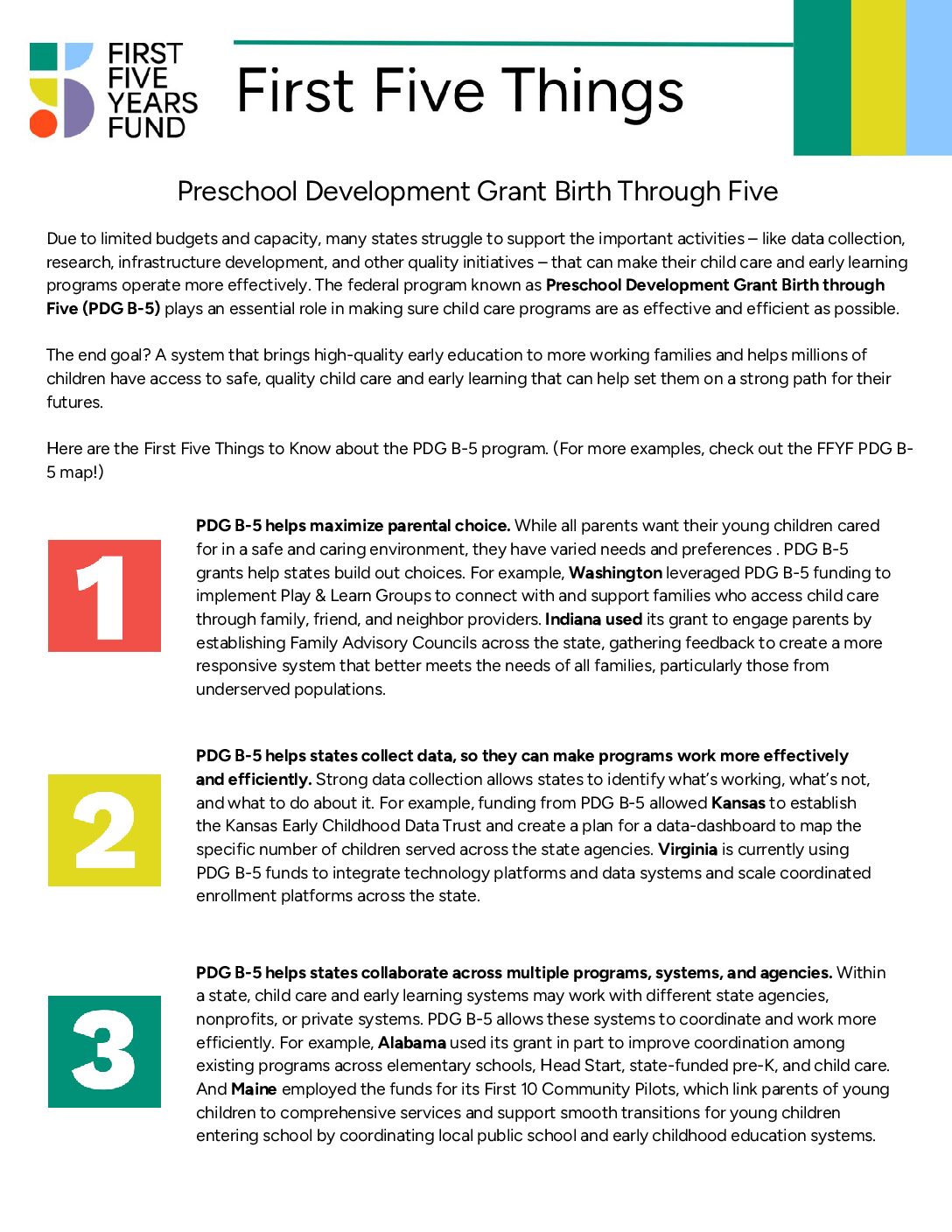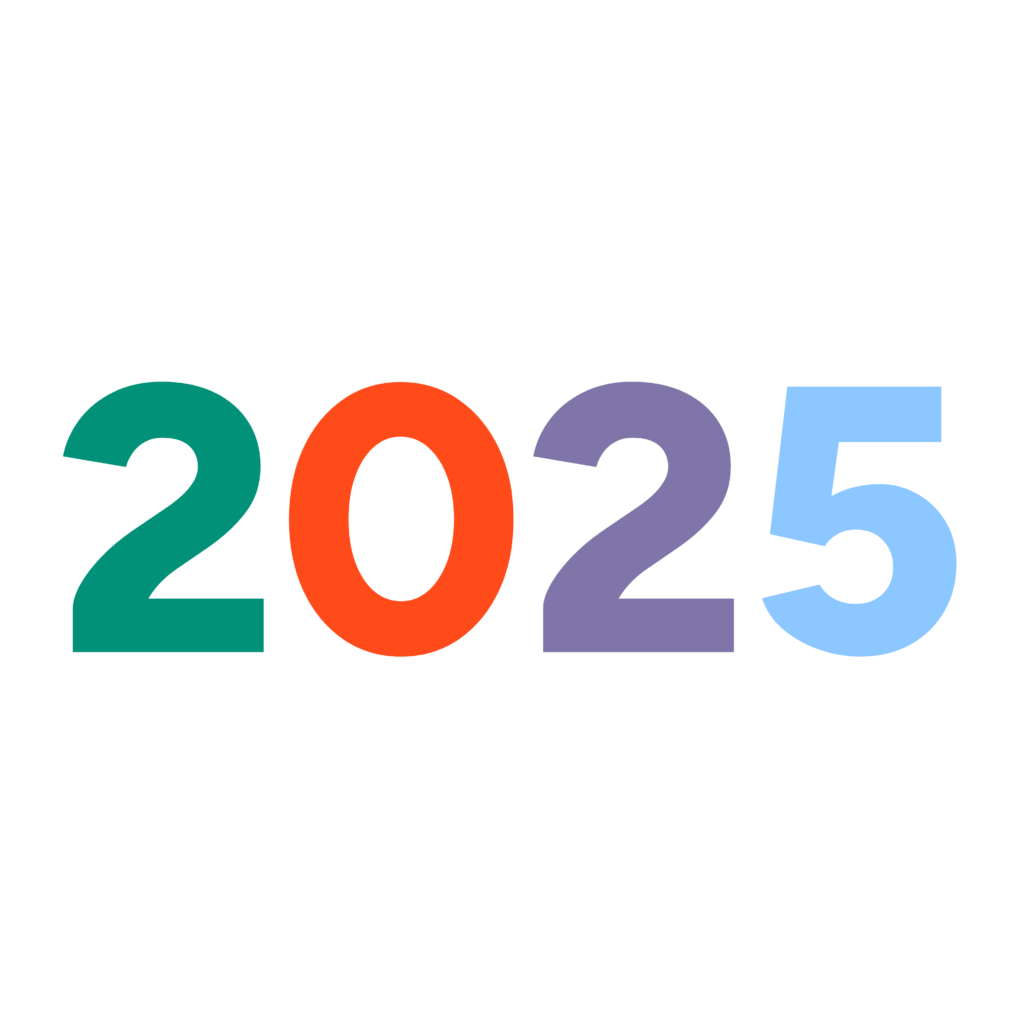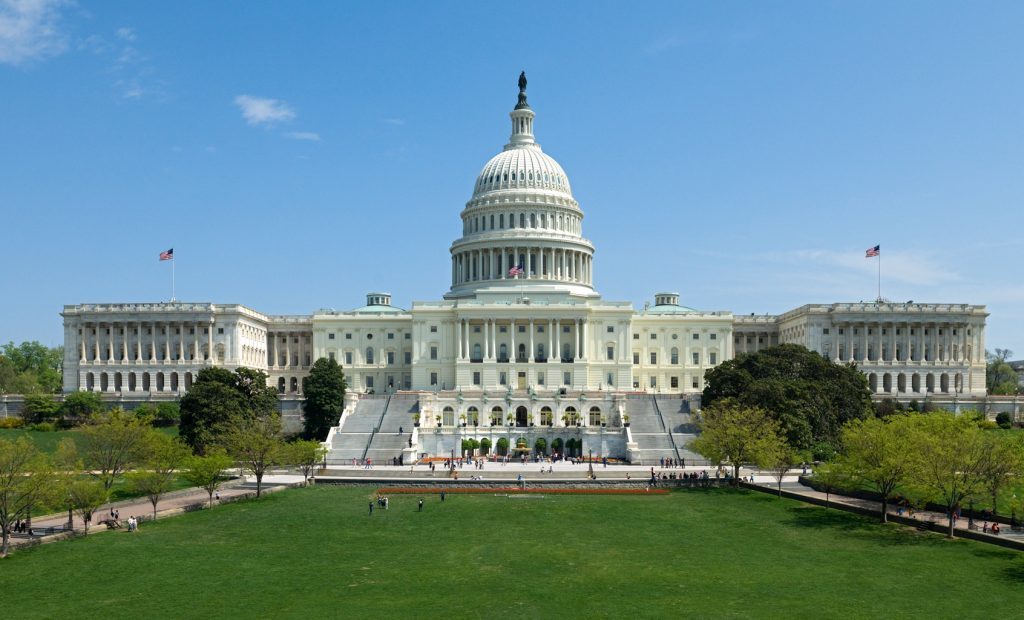The First Five Things to Know About: Preschool Development Grant Birth through Five (PDG B-5)

Due to limited budgets and capacity, many states struggle to support the important activities – like data collection, research, infrastructure development, and other quality initiatives – that can make their child care and early learning programs operate more effectively.
A federal program known as Preschool Development Grant Birth through Five (PDG B-5) plays an essential role in making sure child care programs are as effective and efficient as possible. Among other things, federal PDG B-5 dollars are used by states to:
- Help states improve quality and safety across child care programs.
- Improve state collaboration across multiple child care and early learning programs, systems, and agencies to identify what’s working, what’s not, and what to do about it.
- Assist states in collecting data, so they can make programs work more effectively and efficiently.
The end goal? A system that brings high-quality early education to more working families and helps millions of children have access to safe, quality child care and early learning that can help set them on a strong path for their futures.
Here are the First Five Things to Know about the PDG B-5 program. (For more examples, check out the FFYF PDG B-5 map!)

PDG B-5 grants help maximize parental choice. While all parents want their young children cared for in a safe and caring environment, they have varied needs and preferences when it comes to basics like cost, location, and hours, as well as more specific criteria like curricula and caregiver qualifications. PDG B-5 grants help states build out choices. For example, Washington leveraged grants to implement Play & Learn Groups to connect with and support families who access child care through family, friend, and neighbor providers. Indiana took steps to engage parents by establishing Family Advisory Councils across the state, gathering feedback to create a more responsive system that better meets the needs of all families, particularly those from underserved populations.

PDG B-5 grants help states collect data, so they can make programs work more effectively and efficiently. Strong data collection allows states to identify what’s working, what’s not, and what to do about it. For example, PDG B-5 allowed Kansas to establish the Kansas Early Childhood Data Trust and create a plan for a data-dashboard to map the specific number of children served across the state agencies. Virginia is currently using PDG B-5 funds to integrate technology platforms and data systems and scale coordinated enrollment platforms across the state.

PDG B-5 grants help states collaborate across multiple programs, systems, and agencies. Within a state, child care and early learning systems may work with different state agencies, nonprofits, or private systems. PDG B-5 allows these systems to coordinate and work more efficiently. For example, Alabama used its grant in part to improve coordination among existing programs across elementary schools, Head Start, state-funded pre-K, and child care. And Maine employed the funds for its First 10 Community Pilots, which link parents of young children to comprehensive services and support smooth transitions for young children entering school by coordinating local public school and early childhood education systems.

PDG B-5 grants help states improve quality and safety across child care programs. High-quality child care has wide-ranging benefits for children socially, emotionally, and academically. PDG B-5 funds helped Oregon expand its “Baby Promise,” a program to improve quality in infant-toddler programs with a focus on rural, frontier, and tribal areas. And Arkansas used part of its grant to offer technical assistance and coaching to family child care providers while improving coaching opportunities for infant and toddler teaching staff.

Continued federal funding for PDG B-5 grants is essential. Forty-nine of the 50 states as well as Washington DC and four territories have benefitted from PDG B-5 funding, which has given them the ability to support the data collection, research, infrastructure development, and quality initiatives that can make their child care and early learning programs operate more effectively. Most states have applied for multiple rounds of funding to continue to meet ongoing needs.
The Bottom Line
PDG B-5 provides a unique opportunity for the federal government to support state child care and early learning investments, ensuring they are able to align and continue to grow their early learning systems. This funding helps maximize parental choice, open doors for children who are most in need of assistance, and maximize the reach of state and federal investments. Continued federal funding is necessary for states and territories to continue to build and improve effective mixed-delivery systems.
Learn More
- Capsule Collection: A handy list of resources about how and where PDG B-5 works.
- Preschool Development Grant Birth through Five (PDG B-5) overview: This overview provides a deeper look at PDG B-5 – what it is, how it works, what it does.
- The National PDG Map: This map highlights PDG B-5 funding for each state and how states used it to help child care and early learning programs work more effectively.
- Through the Years: Preschool Development Grants Birth Through Five: This handy chart shows the PDG funding received by each state since the program began in 2018.
Contact
- Jane Fillion, jfillion@ffyf.org
Subscribe to FFYF First Look
Every morning, FFYF reports on the latest child care & early learning news from across the country. Subscribe and take 5 minutes to know what's happening in early childhood education.




